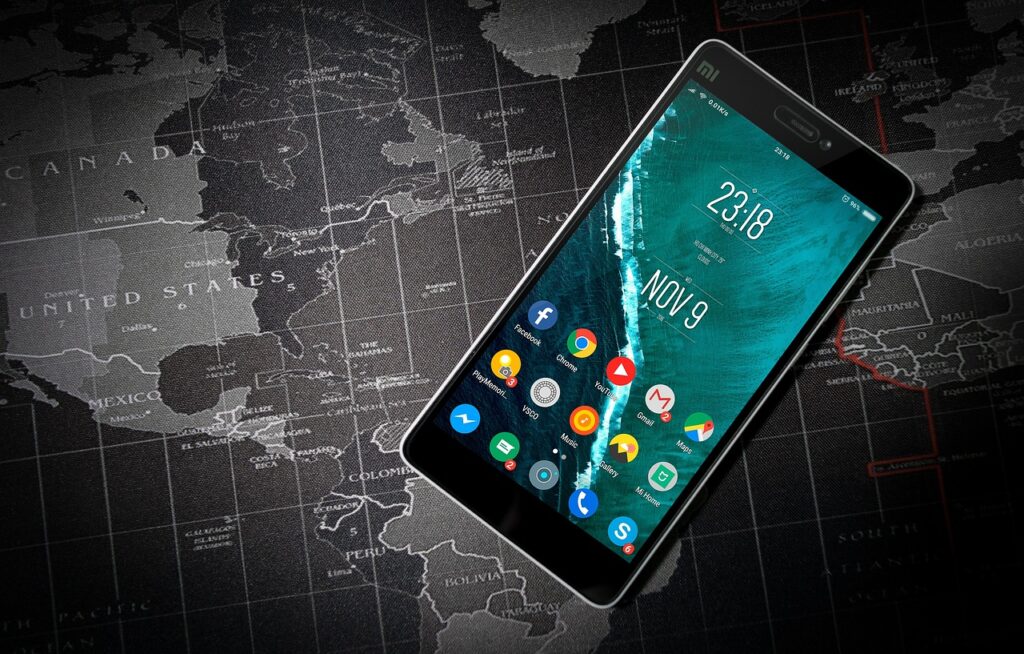The types of display in smartphones is one of the most crucial components of a smartphone. It serves as the window through which users interact with their devices, showcasing vibrant visuals and delivering an immersive user experience. Over the years, smartphone displays have evolved significantly, offering a variety of types that cater to different needs and preferences. Here are the most common types of displays found in smartphones today.
LCD (Liquid Crystal Display):
LCDs have been a staple in smartphones for many years. They work by using liquid crystals that are sandwiched between two layers of polarized glass. When an electric current passes through the crystals, they align to allow or block light, creating the desired image. LCD displays provide good color reproduction and wide viewing angles. However, they may struggle in delivering deep blacks and can consume more power compared to other display types.
AMOLED (Active Matrix Organic Light-Emitting Diode):
AMOLED displays have gained popularity in recent years, thanks to their superior contrast ratios and vibrant colors. These displays consist of organic compounds that emit light when an electric current is passed through them. Unlike LCDs, AMOLED screens don’t require a separate backlight, resulting in deeper blacks and more energy-efficient operation. AMOLED displays offer excellent color accuracy and wider viewing angles, making them ideal for multimedia consumption and displaying vivid images.
Super AMOLED:
Super AMOLED displays take the benefits of AMOLED technology a step further. Developed by Samsung, Super AMOLED screens integrate touch sensors directly into the display, eliminating the need for an additional layer. This design enhances visibility in direct sunlight, reduces screen reflections, and offers a thinner profile. Super AMOLED displays are known for their vibrant colors, deep blacks, and high contrast ratios, delivering an exceptional visual experience.
OLED (Organic Light-Emitting Diode):
OLED displays are similar to AMOLED screens but lack the active matrix design. Each pixel in an OLED display emits its light when an electric current is applied, resulting in precise control of individual pixels and improved energy efficiency. OLED displays provide rich colors, high contrast ratios, and wide viewing angles, making them popular among smartphone users who prioritize visual quality.
IPS (In-Plane Switching):
IPS displays are commonly found in mid-range and budget smartphones. They offer good color accuracy, wide viewing angles, and better outdoor visibility compared to LCDs. IPS technology uses a different arrangement of liquid crystals, allowing for improved light transmission and more accurate color reproduction. While IPS displays may not match the deep blacks and vibrant colors of AMOLED and OLED screens, they provide a reliable and cost-effective option for users.
Retina Display:
Retina Display is a term coined by Apple to describe their high-resolution LCD screens. These displays feature pixel densities that are so high that the human eye cannot distinguish individual pixels at a typical viewing distance. Retina Displays offer sharpness, clarity, and excellent color reproduction. They are known for their accurate color calibration and are widely used in Apple’s iPhone lineup.
The types of display in smartphones play a significant role in determining the overall visual experience. From traditional LCDs to advanced AMOLED, OLED, and IPS panels, there is a wide range of options available to cater to different user preferences. Whether you prioritize vibrant colors, deep blacks, energy efficiency, or budget considerations, there is a smartphone display type suited to your needs. As technology continues to advance, we can expect further innovations and improvements in smartphone displays, offering even more immersive and visually stunning experiences for users.
The Importance of the Types of Display in Smartphones

The types of display in smartphones is a critical factor that greatly impacts the user experience. From the quality of visuals to the overall usability of the device, the display plays a central role in how we interact with our smartphones. Here are some reasons why the type of display is important:
Visual Experience:
The display is the primary medium through which we consume content on our smartphones. Whether we’re browsing the web, watching videos, or playing games, the type of display determines the quality of the visuals we see. Displays with vibrant colors, high contrast ratios, and accurate color reproduction enhance the overall visual experience, making content more engaging and enjoyable.
Clarity and Sharpness:
A smartphone with a high-resolution display ensures that text, images, and videos appear sharp and clear. A higher pixel density allows for more detailed content, reducing the pixelation effect that can occur with lower-quality displays. This is particularly important when reading text, viewing photos, or watching high-definition videos, as it enhances the overall clarity and improves the legibility of the content.
Viewing Angles:
The type of display also affects the viewing angles at which content can be comfortably seen. Displays with wider viewing angles ensure that the content remains clear and visible even when the device is tilted or viewed from the side. This is especially useful when sharing content with others or when using the device in different orientations, such as landscape mode for watching videos.
Battery Life:
The type of display can have a significant impact on battery life. Some display technologies, such as AMOLED and OLED, are known for their energy-efficient operation. These displays do not require a separate backlight, and they can turn off individual pixels to achieve deep blacks, resulting in lower power consumption. By choosing a smartphone with an energy-efficient display, users can enjoy longer battery life and reduce the need for frequent recharging.
The types of display in smartphones significantly impact the user experience. It influences the quality of visuals, clarity, and sharpness of content, viewing angles, battery life, and outdoor visibility. By understanding the importance of display technology and considering it when purchasing a smartphone, users can ensure a more immersive, enjoyable, and convenient mobile experience.


